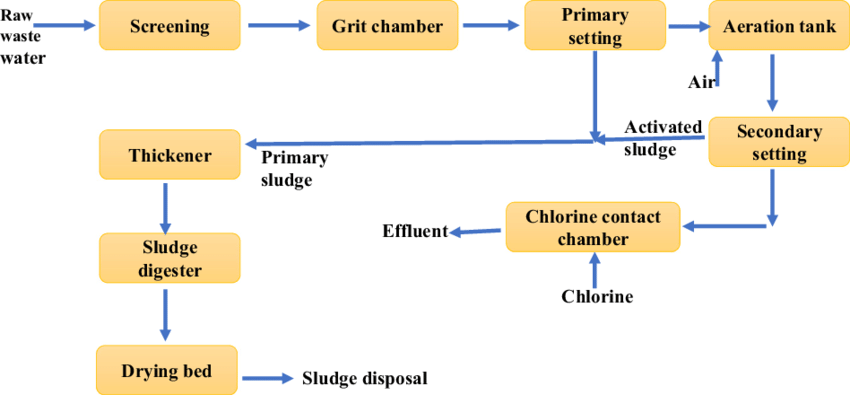Some Of Reclaim Waste
Some Of Reclaim Waste
Blog Article
Get This Report about Reclaim Waste
Table of ContentsReclaim Waste for DummiesThe smart Trick of Reclaim Waste That Nobody is DiscussingTop Guidelines Of Reclaim WasteHow Reclaim Waste can Save You Time, Stress, and Money.Reclaim Waste - The Facts
Explore the types, incidents, and kinds of fluid waste. Residential sewage waste describes the waste and products from a property septic system. This kind of waste is produced by humans in residences, colleges, and other buildings. This only consists of sewage-disposal tanks that have a drain area. The proper management and disposal of residential sewer waste require fluid waste to be transferred to a sewage therapy plant where the appropriate techniques and tools are related to purify and throw away waste.
Commercial waste frequently consists of possible threats, such as combustible products or a mixture of liquid and strong waste products, and calls for an advanced and thorough disposal procedure. The disposal of industrial waste usually involves the filtering of waste before transport to ensure secure and appropriate disposal. Hazardous waste is developed from byproducts and overflow of commercial procedures and production.
This kind of waste can not make use of the same sewage monitoring transportation or procedures as septic or commercial liquids. The hazardous waste management procedure calls for the evaluation and screening of fluid waste prior to it undergoes the disposal process (liquid waste removal melbourne). Runoff waste is the liquid waste that originates from drainage and excess stormwater in extremely populated areas or cities
Runoff waste can create contamination and flooding if not handled appropriately. Learn more concerning drain cleansing and waste monitoring. Making certain appropriate waste administration can stop calamities and minimize environmental injury. Both people in residential setups and experts in industrial or production sectors can take advantage of understanding the procedures and policies of fluid waste management.
Facts About Reclaim Waste Revealed
Contact PROS Services today to learn concerning our waste administration and disposal solutions and the correct methods to look after the liquid waste you produce.
(https://www.pubpub.org/user/leon-aube)This so-called 'wastewater' is not just an important source yet, after treatment, will be launched to our land, rivers or the ocean. Made use of water from commodes, showers, bathrooms, cooking area sinks, washings and industrial processes is recognized as wastewater.

water utilized to cool machinery or tidy plant and equipment). Stormwater, a type of wastewater, is runoff that moves from farming and urban areas such as roof coverings, parks, yards, roads, courses and seamless gutters into stormwater drains, after rainfall. Stormwater streams untreated straight to regional creeks or rivers, eventually reaching the ocean.
The Main Principles Of Reclaim Waste
In Queensland, the majority of wastewater is dealt with at sewer treatment plants. Wastewater is moved from residential or commercial websites through a system of drains and pump terminals, known as sewerage reticulation, to a sewer therapy plant. Local federal governments develop, maintain and run most sewage treatment plants. Operators are accredited under the Environmental Protection Act 1994 to discharge treated wastewater at an acceptable environmental requirement into rivers.
The Division of Natural Resources suggests neighborhood federal governments concerning handling, operating and preserving sewage systems and treatment plants. In unsewered locations, neighborhood governments might call for householders to install private or family sewage therapy systems to deal with domestic wastewater from commodes, kitchens, bathrooms and laundries. The Department of Natural Resources authorizes using family systems when they are shown to be efficient.
In some new subdivisions, treatment of some stormwater to get rid of clutter, sand and crushed rock has actually begun using gross toxin traps. Wastewater therapy occurs in 4 stages: Removes strong issue.
Wastewater after that flows into big storage tanks where solids clear up and are removed as sludge. Grease and scum are skimmed from the surface area. Makes use of little living microorganisms recognizes as micro-organisms to break down and remove continuing to be liquified wastes and fine fragments. Micro-organisms and wastes are integrated in the sludge. Eliminates nitrogen and phosphorus nutrients that can cause algal blossoms in our waterways and endanger aquatic life.
What Does Reclaim Waste Do?
Nutrient elimination is not readily available at all sewage treatment plants due to the fact that it requires costly specialized devices. Clear liquid effluent created after therapy may still contain disease-causing micro-organisms - liquid waste removal.

This usually indicates wastewater needs to be dealt with or pollutants gotten rid of prior to it can be released to waterways. The majority of wastewater moves into the sewage system. Under the Act, city governments administer approvals and licences for ecologically appropriate tasks (ERAs) entailing wastewater launches that could have a neighborhood effect. The division carries out approvals and licences to ERAs involving wastewater releases that might have a local or statewide impact.
Reclaim Waste Fundamentals Explained
Or else, examples are taken for research laboratory analysis. Often lots of tests are needed to establish the degrees of each of the various toxins such as oils, heavy steels and chemicals in water. Monitoring gives factual information about water high quality and can verify that permit conditions are being satisfied. The info gotten through surveillance offers the basis for making water top quality choices.
Report this page